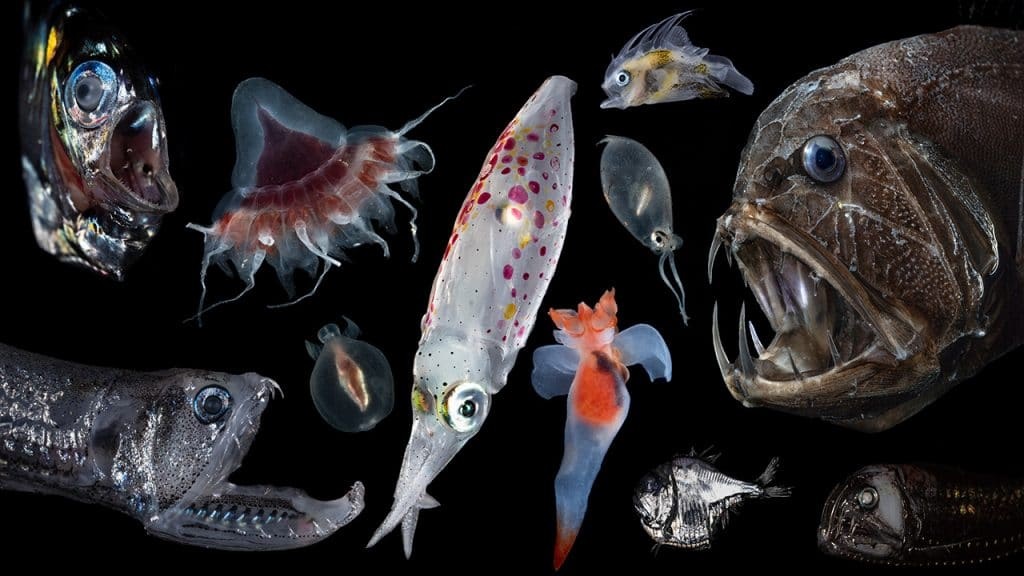Can the Deep Ocean be Harvested Sustainably or Not?
- 8 June 2020
- Category: News, References

Ecologically and Economically Sustainable Deep Ocean Fisheries?
Researchers are studying if mesopelagic fisheries (organisms living deep in the oceans) can be exploited sustainably. There have been some calls to start exploiting these resources, but first we must investigate whether it can be done safely and sustainably or not. These deep layers of the southern ocean also play an important role in carbon sequestration.
Mesopelagic organisms represent the largest unexploited resource left in the world’s oceans, with a recent biomass estimate of around 10 billion metric tons, 10 times larger than previous preliminary estimates. Some are calling for this layer to be fished to provide fish oils and food for aquaculture, but might it upset or harm the ocean ecosystem?
Mesopelagic organisms live at depths between 200 and 1000m. This mesopelagic community is the subject for research in the new EU-H2020 project MEESO. CLS Fisheries’ Marine Ecosystem Modelling Team has been invited to take part in the project over the next four years. The goal is to fill in major knowledge gaps on these organisms and their role in the full marine ecosystem.
The background to MEESO is the global human population growth causing increased demand for food, including marine proteins and lipids.
Our knowledge of the mesopelagic community in terms of biodiversity, the drivers of its biomass, its role in carbon sequestration, and its interactions with the epipelagic community, including commercial fish stocks, has major gaps. The main reason for these knowledge gaps is the lack of methods to observe and sample the relatively small organisms living at depths between 200 and 1000 m.
Assessing Sustainability
MEESO will determine whether it is possible to sustainably harvest the mesopelagic biomass for products included in the human food chain, or whether this zone must be protected. It is important to assess the long term sustainability of potential exploitation at an early stage to develop appropriate management measures.
MEESO’s implementation of new acoustic research survey technologies will provide estimates of the abundance and spatial distribution of key species, and provide insight into the structure and functioning of this largely unknown part of marine ecosystems.
New Fishing Technologies and Tools
New fishing and processing technologies and mapping of contaminant and nutrient content of key species will be used to explore whether such fisheries can be viable. The trade-offs between exploitation and changes in ecosystem service values such as biodiversity and carbon sequestration will be studied, while identifying options for governance.
Our Marine Ecosystem Modelling Team is Responsible for:
- Estimating the biomass and dynamics of mesopelagic functional groups at global scale.
- The effects of harvesting mesopelagic stocks on commercially important and highly migratory top predators (Atlantic albacore) will be addressed to quantify the extent to which fishing mortality on mesopelagics may impact feeding, spawning habitats and natural mortality of tuna.
- Full vertical 1D coupling to a biogeochemical model (PISCES-SEAPODYM) will permit comparison of the carbon budget with other methods and an analysis of carbon fluxes due to mesopelagic functional groups and passive fluxes under climate change projections.
